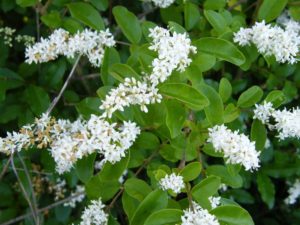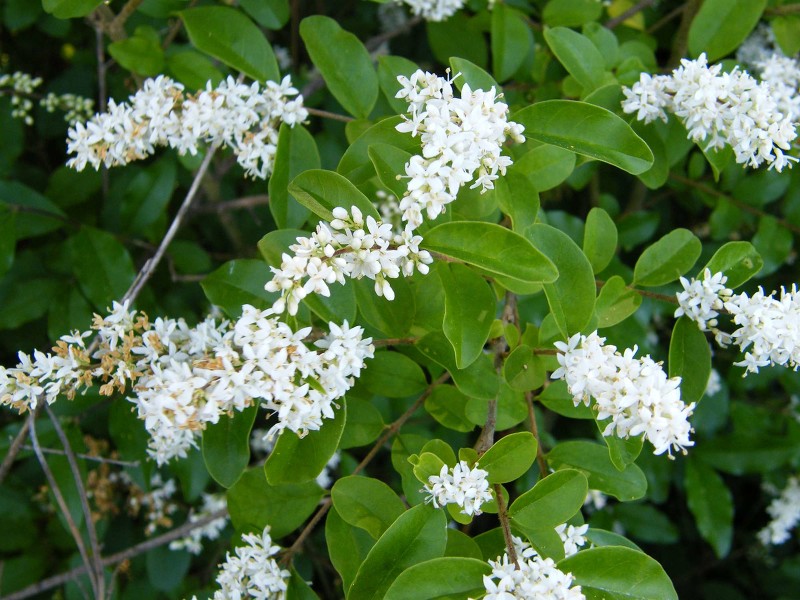 Ligustrum sinense
Ligustrum sinense
Just want to know how to kill it?
Skip to control methods
Also known as
hedge privet, small-leaved privet
What does it look like?
Shrub or small tree growing to 5m high, with distinctive warty lumps on stems and densely hairy shoots. Evergreen in Northland, with oval, dull green leaves (25-60 x 12-25 mm), and a hairy midrib on the underside. Leaves occasionally have wavy edges. Loose drooping clusters (up to 10cm long) of small, tubular and very fragrant white flowers with tiny mauve anthers appear October-December, followed by round, green berries that mature to dull purplish-black.
Why is it a problem
Chinese privet produces many high-viability seeds in widely dispersed berries, and forms dense stands, displacing native shrubs and other understorey species. It tolerates dense shade (although only flowers in moderate light), frost, damage, grazing, most soil types, high to moderately low temperatures, damp and drought conditions, salt and wind. It is short-lived but continuously replaced.
Poisonous berries may possibly impact on native fauna, especially insects.
Leaves & fruit poisonous, perfume and pollen contributes to asthma and allergies.
How does it spread?
Seed is spread by many bird species, as well as vegetation dumping and soil movement. Common seed sources are domestic and farm hedges, roadsides, wastelands, quarries, gullies, and exotic plantations.
How much of it do we have on the Whangarei Heads Peninsula?
Relatively little. It is far less common then the larger tree privet, with known hotspots on the Pataua South Rd and Beasley Rd, at the northern end of McLeod Bay, and in Little Munro Bay.
What can we DO about it at Whangarei Heads?
Because we have relatively little, if we act early we can prevent it spreading further and becoming a larger problem. It is easiest to spot when flowering as the prolific white flowers are very noticeable.
Check out the control methods below:
How do I control it?
- Pull or dig seedlings. Leave to rot on site
- Cut stump application: Cut within 2 cm of ground level and immediately treat stump with Weed Action’s Gly/ Met Mix or picloram gel. Cut stems can be left on site to rot down, or mulched.
- Drill & fill: Drill using 12-13mm auger bit sloping holes into the sapwood at 7-8 cm intervals around the base of the trunk and any exposed roots. & immediately fill each hole with Weed Action’s Gly/ Met Mix.
- Spray seedlings with triclopyr at 6mls/L of water + penetrant, best in spring and autumn.
Follow up 6-monthly. Easiest to spot during spring flowering. Bared areas reseed profusely. Replant bared areas (after seedlings appear naturally) to minimise seedling growth.
CAUTION: when using any herbicide or pesticide PLEASE READ THE LABEL THOROUGHLY to ensure that all instructions and safety requirements are followed.
Click here for more information on the herbicides referenced in the control methods, or here for more information on the suggested techniques.
Save

